Serapis was a Greek-Egyptian syncretic god, made up of the Egyptian divinities Osiris and Apis (identified with Zeus and Hades) who emerged in Memphis among the descendants of the Greek mercenaries of Psammetichus and Amasis in the 7th-6th centuries BC. C., and whom Ptolemy I appointed as the main god of Alexandria, building the first temple or Serapeus on the acropolis of the city (at its southwestern end, called Racotis) in the year 300 B.C.
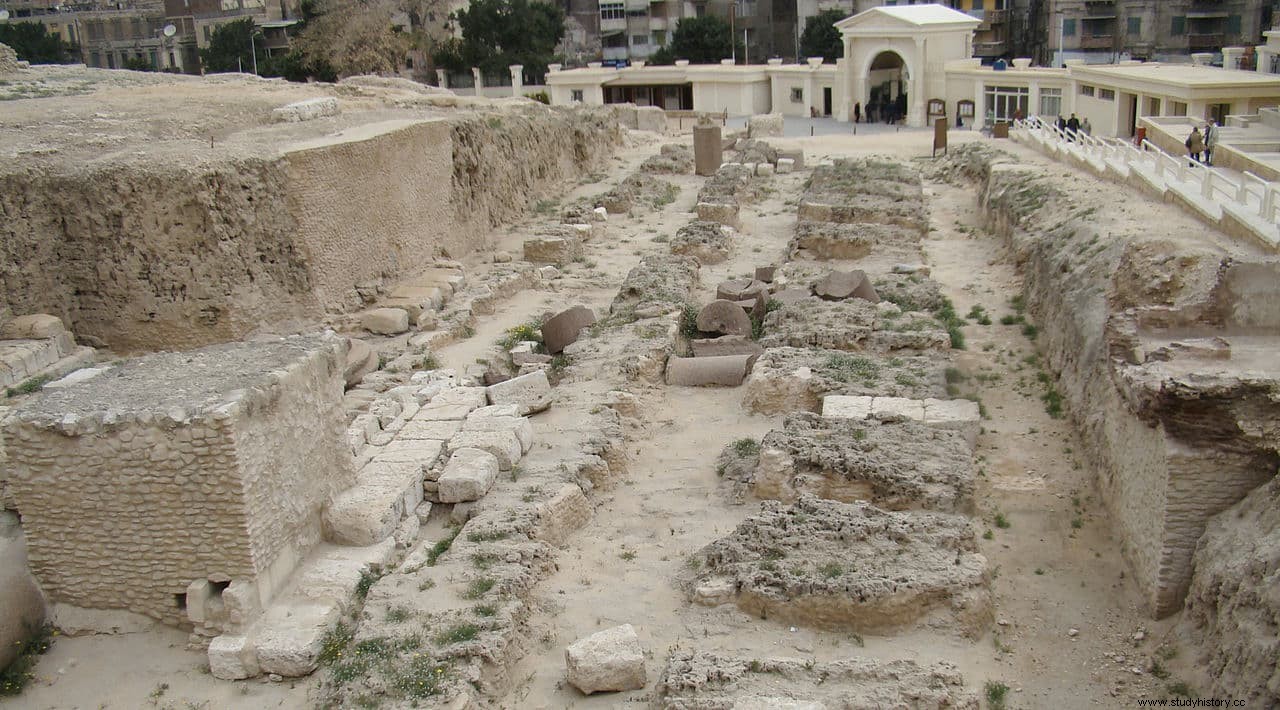
Strabo in the 1st century BC. He affirms that the place where it stood was in very poor condition, since at that time the main area of the city was the neighborhood created by Augustus, Nicopolis.
In 181 AD that original temple would be destroyed by fire. It would be rebuilt by Ptolemy III who enlarged it sometime between 181 and 217 AD, embellished it and turned it into a great sanctuary, the largest and most magnificent of all Greek temples in Alexandria (some even consider it the most beautiful of all Greek temples). ever built) and the eastern Mediterranean. In its enclosure it even housed a part of the famous library of Alexandria that had survived the fire in the times of Julius Caesar.
Located on the Alexandrian acropolis, the enclosure was accessed by a staircase of 100 steps. All the sanctuary buildings were covered in marble, and the interior of the temple was lined with sheets of gold, silver, and other precious metals.
The Serapeum was closed in July 325 AD. by the emperor Constantine, but it seems that it later reopened, and the sources indicate that still between 370 and 390 AD. it was one of the main places of pagan pilgrimage. The temple continued to function as such and the philosophers continued to teach in the classrooms set up in the sanctuary.
Amiano Marcelino, in his history of the empire written in those same years, said of the Serapeum:
In 391 AD the bishop of Alexandria, Theophilus, decided to parade certain Mithraic cult objects that had been found in procession through the streets, so that the Christians would mock them. The pagans did not sit too well and took justice into their own hands in a series of riots that left many dead.
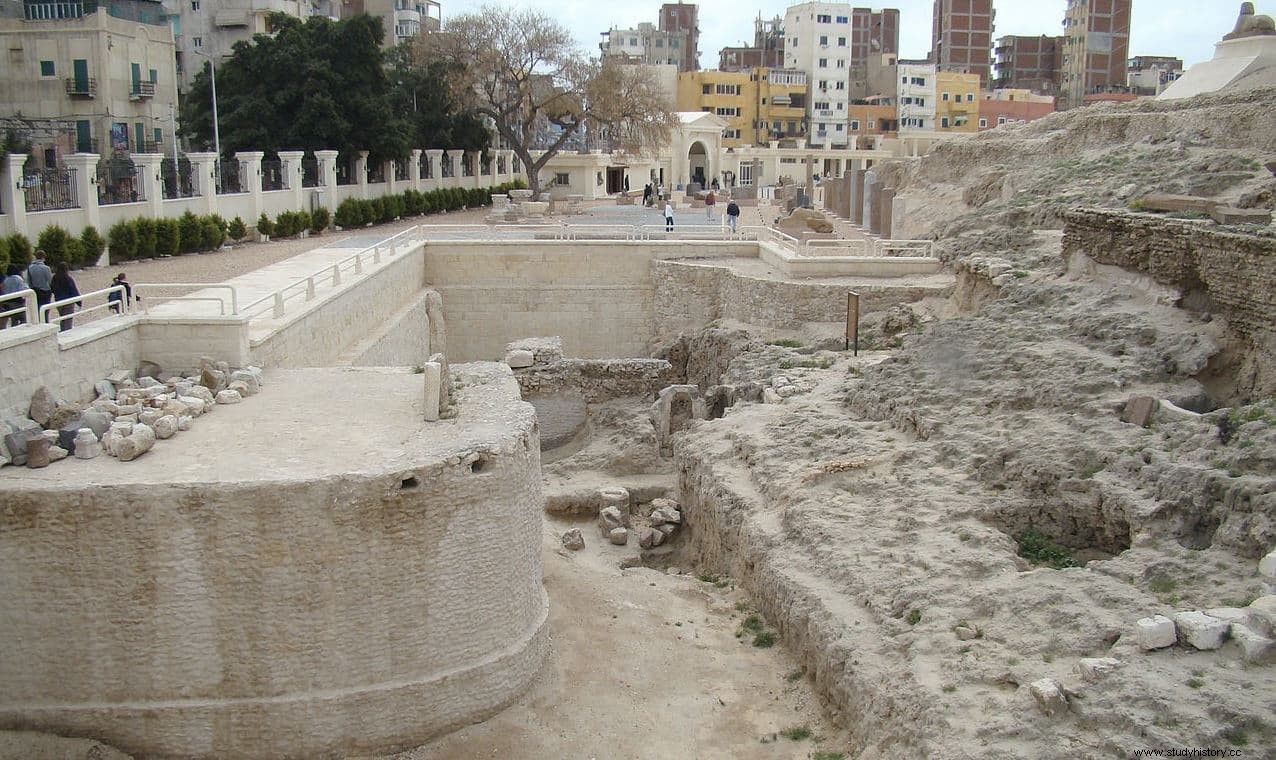
The response of the Christians was immediate. The pagans took refuge in the precincts of the temple, which was assaulted by Christians who greatly outnumbered them. The temple and what was left of the library were destroyed and were never rebuilt.
Rufinus of Aquileia, a Christian writer and exegete who witnessed the destruction, described the Serapeus thus:
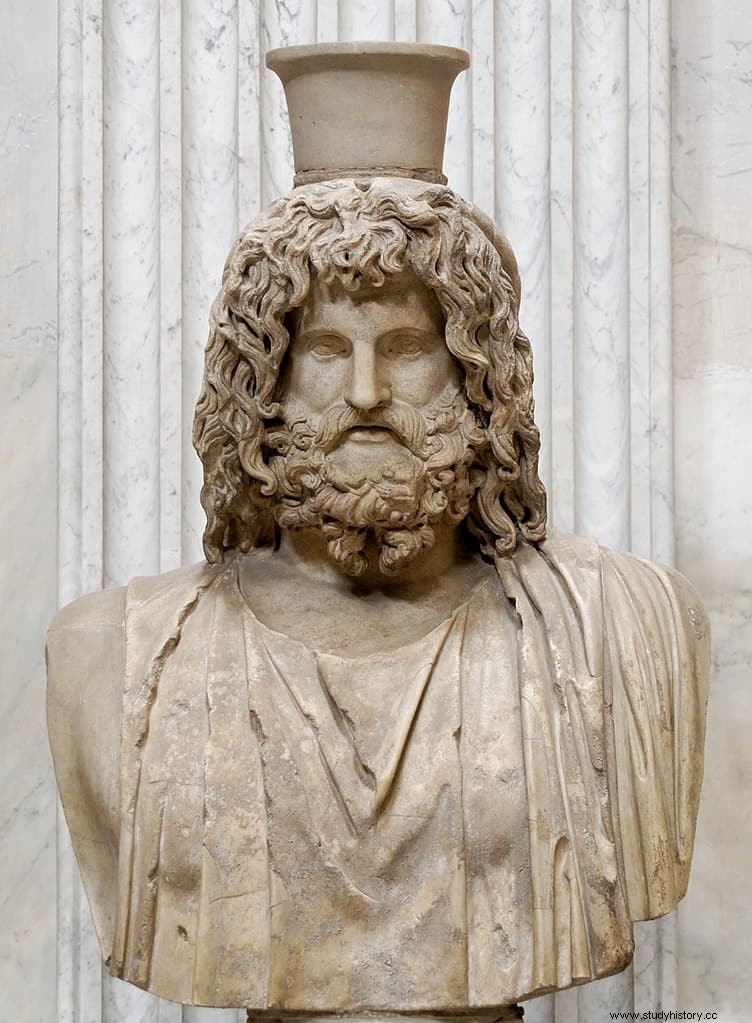
The statue of Serapis referred to by Rufinus was a colossal sculpture of the god, made of gold, marble and ivory by the famous Greek sculptor Briaxis more than 600 years earlier, when the Serapeum was founded. The statue was torn to pieces and its parts taken to different parts of the city to be destroyed.
In the place where the Serapeo was, a monastery was established and the church of San Juan Bautista was built. Later, the entire enclosure would suffer a second wave of destruction in the 10th century at the hands of the Muslims, who established a cemetery there. By the 12th century, only parts of the colonnade survived.
Of all this, today only the (badly) called Pompey's column remains standing. According to the Greek rhetorician Aphthonius, who visited the site around 315 AD. and he could still see the temple standing, the column stands on what was the highest part of the Serapeum.
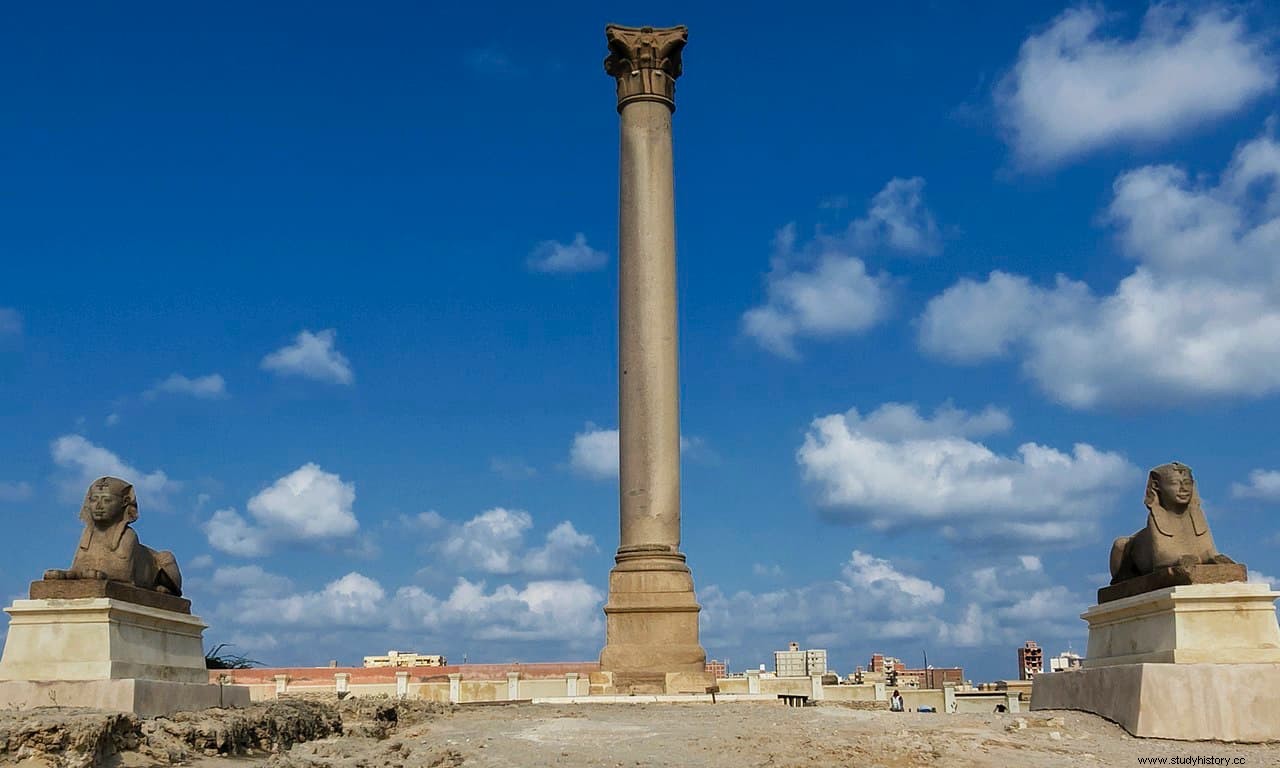
It was erected in honor of Diocletian between 298 and 302 AD. in the eastern part of the sanctuary and next to the temple itself. It is 26.85 meters high and was originally crowned by a 7-meter-high statue of the emperor on top of the Corinthian capital.
It is known that this statue existed because fragments of it were found at the foot of the column in the 18th century. One of these fragments, which was part of the thigh and measured 1.6 meters, made it possible to calculate the total height of the statue. All of these fragments have disappeared, although some are known to be in private collections in Europe and America.
It is the only ancient column whose shaft is made of a single monolithic block (not drums) left standing in Egypt, and one of the largest and heaviest Greco-Roman monoliths, weighing 285 tons.
The shaft is made of pink granite (lapis syeneites ) extracted from the quarries of Aswan, it measures 20.46 meters long and 2.71 meters in diameter at its base. The plinth on which it stands is 6 meters high. The Corinthian capital is made of gray granite.
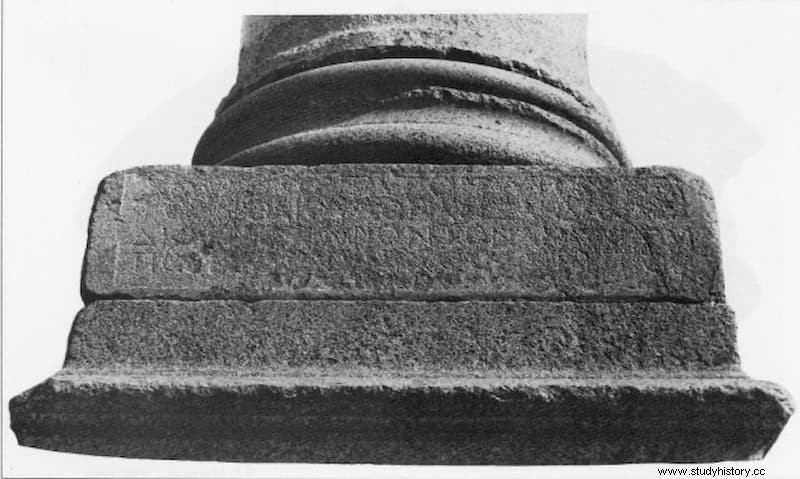
The plinth bears a dedicatory inscription in which Diocletian is defined as polioúchos (god guardian of the city). There are four lines in Greek in which a praefectus Aegypti called Publius dedicates the monument in honor of Diocletian, perhaps to commemorate one of his visits or one of his Egyptian campaigns:
It could be precisely the confusion between the Greek spelling of the name Publius with that of the republican general Pompey, which could have led the crusaders to think that the column marked the place where the latter was buried, after his death at the hands of Ptolemy XIII in 48 BC. In any case, even today it is still called Pompey's pillar or column .
As a curiosity, in the Irish town of Carrigadaggan Hill there is a copy of the column built between 1839 and 1841, with an internal staircase that allows you to climb 28.75 meters to the top of the capital. It was built by General Robert Browne-Clayton in memory of his son who fell in battle. With the bad (or in this case good) luck that as soon as the works were finished, his son returned home safe and sound.
